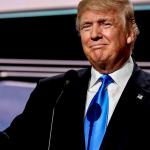
The 2023 United Auto Workers (UAW) strike has led to the rise of ETFs to buy during this period of disruption. These ETFs are weighted towards what can be substantial changes in the automotive industry. However, these ETFs capitalize on more than just short-term trends. Instead, they may be a good fit for various types of portfolios that focus on growth at a reasonable price.
The ETFs to buy listed in this article are all strong picks due to their weightings on strong stocks and reasonable expense fees. Some believe they may also outperform the broader market such as the S&P 500.
So with this thesis in mind, here are the best ETFs to buy to capitalize on the United Auto Workers strike.
KraneShares Electric Vehicles and Future Mobility Index ETF (KARS)

The KraneShares Electric Vehicles and Future Mobility Index ETF(NYSEARCA:KARS) invests in electric vehicle manufacturers, lithium miners and battery producers, and hydrogen fuel cell manufacturers. These are all industries that are expected to see a lift in demand as a result of the strikes.
KARS has net assets of approximately $163 million, with a total annual fund operating expense of 0.72%. The top holding is Tesla (NASDAQ:TSLA) comprising 4.46% of net assets. Its performance over the past five years has lagged behind the broader market, with an 8.76% return compared to the S&P 500’s 48.25% return.
However, it’s crucial to point out that we’ve only just started to see the adoption of electric and hydrogen vehicles. It has a strong upside for investors who want concentrated exposure to these industries.
First Trust S-Network Future Vehicles & Technology ETF (CARZ)

The First Trust S-Network Future Vehicles & Technology ETF (NASDAQ:CARZ) holds positions in Tesla (4.8%) and Stellantis (OTCMKTS:STLAM) (0.79%) making it a candidate to gain from Tesla’s favorable position in the market and any potential shifts in the automotive industry due to the strike.
The ETF has an expense ratio of 0.70%. This makes it higher than the median of all ETFs, which hovers around the 0.50% mark. It also has a 34.31% YTD return, a 17.95% 1-year return, and a 6.83% return since inception, with a 3-year SD of 28.05%. However, the fund is also very diversified, as it tracks the return of over 100 different stocks.
The stock prices of the assets it holds such as TSLA stock are expected to rise significantly in the future. Quarterly rebalances help to trim or remove the laggards. A stock needs a market cap of at least $500 million and a three-month average daily trading value of at least $5 million to be eligible. It helps make it one of those ETFs to buy.
Global X Autonomous & Electric Vehicles ETF (DRIV)

The Global X Autonomous & Electric Vehicles ETF (NASDAQ:DRIV) has allocations in several major automotive companies. This diversification across both traditional and electric vehicle manufacturers could provide a balanced opportunity. It invests in companies like TSLA stock as well as Ford (NYSE:F) and GM (NYSE:GM).
Things are looking good for DRIV as well as for the electric and self-driving vehicle market in general. Global registrations of plug-in EVs increased by 38% year over year in June, representing 19% of the total global car market.
DRIV is up just over 17% YTD and has an expense ratio of 0.68%. Together with the other ETFs in this list, this makes DRIV one of the strongest contenders for an ETF to consider. The untapped opportunities to see growth from autonomous vehicles are also on the cards.
It should be noted that the growth of autonomous vehicles is also predicted to come mostly from Asia, in particular China. This may give it another compelling reason to buy, as most investors lack international diversification into emerging markets which DRIV provides.
On the date of publication, Matthew Farley did not have (either directly or indirectly) any positions in the securities mentioned in this article. The opinions expressed are those of the writer, subject to the InvestorPlace.com Publishing Guidelines.





